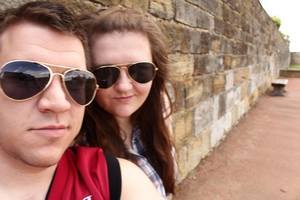To turn recurring decimals into fractions, we do the following:
1) Make the recurring decimal equal to r
2) Multiply by a power of 10 (e.g. 1, 10, 100, 1000, etc...) to get any non-recurring digits before the decimal points
3) Multiply the answer in step 2 by a power of 10 (e.g. 10, 100, 1000, etc...) to get any recurring parts before the decimal point.
4) Take away the answer in step 2, from the answer in step 3.
5) Divide both sides by the integer in front of r to get it on its own
6) Cancel the fraction down
Selecione uma das opções:
